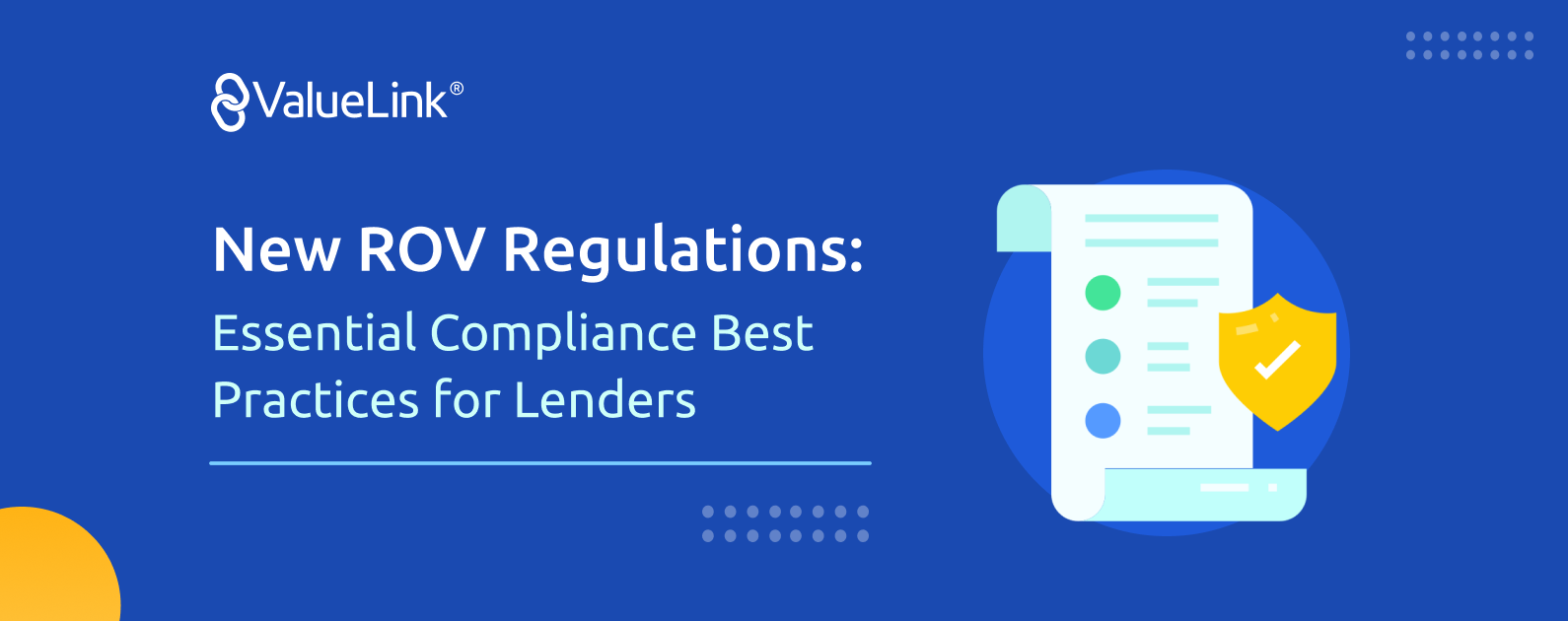
Staying compliant with regulatory changes is crucial in the evolving mortgage lending landscape. With the new Reconsideration of Value (ROV) regulations set to take effect, lenders must adapt their processes to ensure compliance and maintain the trust of borrowers. These guidelines, introduced by Fannie Mae, Freddie Mac, and HUD, are designed to create a standardized framework for addressing borrower concerns about property appraisals. Lenders need to implement best practices that meet regulatory requirements and enhance operational efficiency to stay ahead of the curve.
One of the foundational elements of the new ROV regulations is borrower empowerment. Lenders must ensure that borrowers are fully informed about their rights to request a reconsideration of value. This involves:
Providing Clear Disclosures: At the time of loan application and upon delivery of the appraisal report, borrowers should receive clear, understandable disclosures about the ROV process. This includes information on how to initiate an ROV request and the documentation required.
Guiding Borrowers Through the Process: Lenders play a pivotal role in this process, offering resources or customer support to help borrowers understand the ROV process. This includes what constitutes a valid ROV request and how to gather supporting data.
Lenders must conduct a thorough internal review before forwarding an ROV request to an appraiser. This step is crucial for ensuring the request is complete, accurate, and compliant with Appraiser Independence Requirements (AIR). It underscores the importance of attention to detail in the lending process. Critical aspects of an effective internal review include:
Verifying Completeness: Ensure all necessary information, such as borrower details, property address, and specific appraisal concerns, is included in the ROV request.
Screening for Compliance: Review the request to confirm it meets AIR and other relevant regulations. This helps prevent issues later in the process and ensures that the request is valid.
Each lender’s needs are unique, and the ability to customize ROV-related communications can make a significant difference in maintaining compliance and improving borrower satisfaction. Lenders should:
Tailor Disclosures and Communication: Customize ROV disclosures and emails based on the specific needs of their clients, particularly Appraisal Management Companies (AMCs). This personalization ensures that all parties involved are on the same page and that the process aligns with client expectations.
Standardize Interaction with Appraisers: Develop clear, standardized communication protocols for interacting with appraisers. This includes instructions on addressing borrower concerns and the steps required if the appraised value remains unchanged after an ROV.
Comprehensive documentation is a cornerstone of regulatory compliance. Lenders must ensure that all ROV-related communications, actions, and decisions are thoroughly documented within their systems. Best practices include:
Automating Documentation: Use technology to automatically record and organize all communications and documents related to ROV requests. This not only ensures compliance but also simplifies audits and reviews.
Utilizing Reporting Tools: Implement reporting tools that provide insights into the ROV process, helping lenders track the status of requests, identify bottlenecks, and ensure timely responses.
The regulatory environment continually evolves, and staying informed about changes is essential for compliance. Lenders should:
Regularly Update Policies: Review internal policies and procedures to align with the latest ROV regulations and industry best practices.
Train Staff: Ensure that all team members, especially those involved in the ROV process, are trained on the latest regulations and understand their roles in maintaining compliance.
At ValueLink, we understand the challenges of adapting to new regulations. Our platform is designed to support lenders in managing the ROV process efficiently and fully complying with the latest guidelines.
Staying compliant with the new ROV regulations requires a proactive approach that combines borrower education, rigorous internal processes, customized communication, and effective use of technology. To learn more about how ValueLink can help you stay compliant with the new ROV regulation, contact us today!
© 2025 ValueLink and all related designs and logos are trademarks of ValueLink Software, a division of Spur Global Ventures Inc.